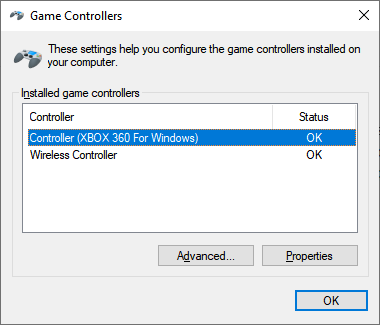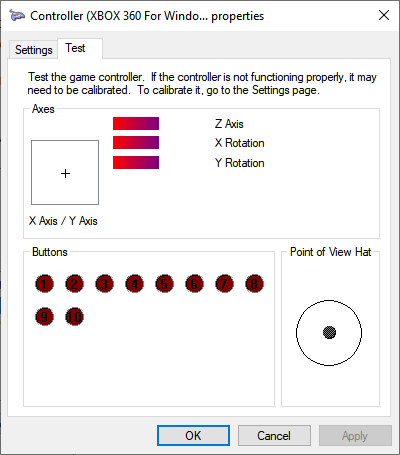Here is HID report descriptor that I dumped from Stadia Controller Model H2B connected via USB.
Take note on PID Page (0x0F) and DC Enable Actuators Usage (0x97) part with two 16 bit values - in its output report. You need to provide such descriptor in your controller for rumble support. Then it will be a chance that it will be used by SDL/DirectInput/whatever.
0x05, 0x01, // Usage Page (Generic Desktop Ctrls)
0x09, 0x05, // Usage (Game Pad)
0xA1, 0x01, // Collection (Application)
0x85, 0x03, // Report ID (3)
0x05, 0x01, // Usage Page (Generic Desktop Ctrls)
0x75, 0x04, // Report Size (4)
0x95, 0x01, // Report Count (1)
0x25, 0x07, // Logical Maximum (7)
0x46, 0x3B, 0x01, // Physical Maximum (315)
0x65, 0x14, // Unit (System: English Rotation, Length: Centimeter)
0x09, 0x39, // Usage (Hat switch)
0x81, 0x42, // Input (Data,Var,Abs,No Wrap,Linear,Preferred State,Null State)
0x45, 0x00, // Physical Maximum (0)
0x65, 0x00, // Unit (None)
0x75, 0x01, // Report Size (1)
0x95, 0x04, // Report Count (4)
0x81, 0x01, // Input (Const,Array,Abs,No Wrap,Linear,Preferred State,No Null Position)
0x05, 0x09, // Usage Page (Button)
0x15, 0x00, // Logical Minimum (0)
0x25, 0x01, // Logical Maximum (1)
0x75, 0x01, // Report Size (1)
0x95, 0x0F, // Report Count (15)
0x09, 0x12, // Usage (0x12)
0x09, 0x11, // Usage (0x11)
0x09, 0x14, // Usage (0x14)
0x09, 0x13, // Usage (0x13)
0x09, 0x0D, // Usage (0x0D)
0x09, 0x0C, // Usage (0x0C)
0x09, 0x0B, // Usage (0x0B)
0x09, 0x0F, // Usage (0x0F)
0x09, 0x0E, // Usage (0x0E)
0x09, 0x08, // Usage (0x08)
0x09, 0x07, // Usage (0x07)
0x09, 0x05, // Usage (0x05)
0x09, 0x04, // Usage (0x04)
0x09, 0x02, // Usage (0x02)
0x09, 0x01, // Usage (0x01)
0x81, 0x02, // Input (Data,Var,Abs,No Wrap,Linear,Preferred State,No Null Position)
0x75, 0x01, // Report Size (1)
0x95, 0x01, // Report Count (1)
0x81, 0x01, // Input (Const,Array,Abs,No Wrap,Linear,Preferred State,No Null Position)
0x05, 0x01, // Usage Page (Generic Desktop Ctrls)
0x15, 0x01, // Logical Minimum (1)
0x26, 0xFF, 0x00, // Logical Maximum (255)
0x09, 0x01, // Usage (Pointer)
0xA1, 0x00, // Collection (Physical)
0x09, 0x30, // Usage (X)
0x09, 0x31, // Usage (Y)
0x75, 0x08, // Report Size (8)
0x95, 0x02, // Report Count (2)
0x81, 0x02, // Input (Data,Var,Abs,No Wrap,Linear,Preferred State,No Null Position)
0xC0, // End Collection
0x09, 0x01, // Usage (Pointer)
0xA1, 0x00, // Collection (Physical)
0x09, 0x32, // Usage (Z)
0x09, 0x35, // Usage (Rz)
0x75, 0x08, // Report Size (8)
0x95, 0x02, // Report Count (2)
0x81, 0x02, // Input (Data,Var,Abs,No Wrap,Linear,Preferred State,No Null Position)
0xC0, // End Collection
0x05, 0x02, // Usage Page (Sim Ctrls)
0x75, 0x08, // Report Size (8)
0x95, 0x02, // Report Count (2)
0x15, 0x00, // Logical Minimum (0)
0x26, 0xFF, 0x00, // Logical Maximum (255)
0x09, 0xC5, // Usage (Brake)
0x09, 0xC4, // Usage (Accelerator)
0x81, 0x02, // Input (Data,Var,Abs,No Wrap,Linear,Preferred State,No Null Position)
0x85, 0x05, // Report ID (5)
0x06, 0x0F, 0x00, // Usage Page (PID Page)
0x09, 0x97, // Usage (0x97)
0x75, 0x10, // Report Size (16)
0x95, 0x02, // Report Count (2)
0x27, 0xFF, 0xFF, 0x00, 0x00, // Logical Maximum (65534)
0x91, 0x02, // Output (Data,Var,Abs,No Wrap,Linear,Preferred State,No Null Position,Non-volatile)
0xC0, // End Collection
// 156 bytes


